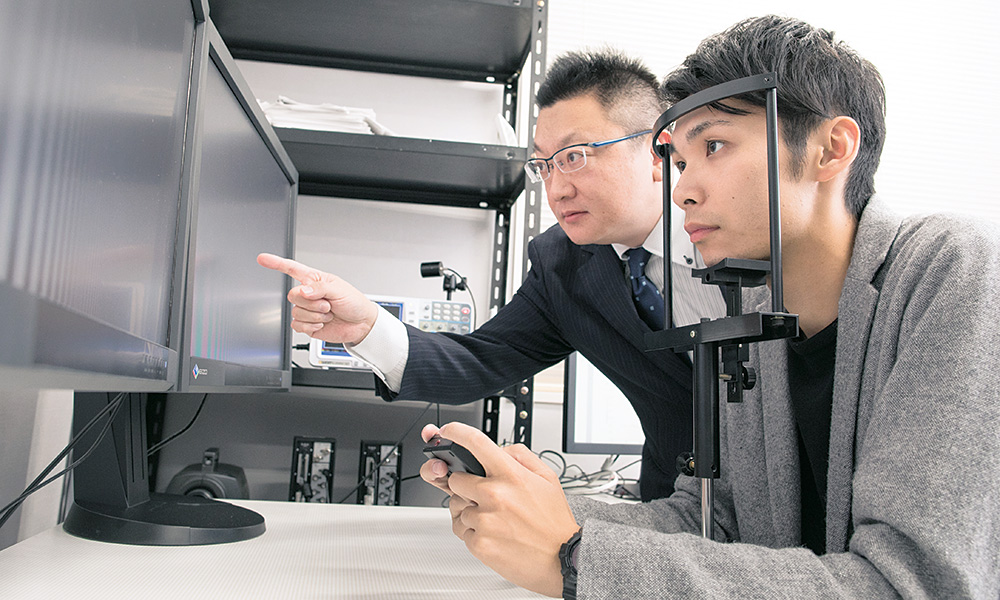
Overview
This field is not only for orthoptists but also for anybody who is interested in visual sciences. The interdisciplinary curriculum is focused both on the clinical ophthalmology and on the fundamental visual sciences, including physiology, psychology, physics, and computer science. The goal of the field is to raise competent international-minded QOL supporters who can deal flexibly with the needs of society and who can engage in team medicine and team care.
Characteristics
- Invention of new inspection methods in ophthalmology
- The orthoptist is an expert in the inspection of visual performance. However, many of the current inspection methods are often difficult to apply to the elderly people and small children. This is because these methods require subjective responses from those people and their responses are often not adequate or accurate for effective diagnoses. Therefore, clinical sites need inspection methods that can evaluate visual performance efficiently and accurately in a short time. Our field aims to find principles of visual performance and to develop new methods of visual performance inspection.
- Development of new testing equipment in visual engineering and optics
- In ophthalmology, new testing methods have been developed one after another such as optical coherence tomography. However, for the developer of testing equipment, it is difficult to examine the clinical content. In our field, students can receive guidance from the interdisciplinary supervisors with a variety of backgrounds, including clinical medicine and optical engineering.
- Study of the visual brain function
- Visual information first enters the eye and go through the complex processes in the brain, then the processed information is outputted as motor responses such as the movement of eyes, hands, or and other organs. The study of vision is comprised of not only the study of eye balls but also that of the whole brain functions. We examine the visual brain functions with the methods of psychophysics, electrophysiology, and functional brain imaging.
Master’s Degree
Master of Medical Science (M.M.Sc.) in Orthoptics and Visual Sciences
Examples of Research Topics
- Scientific approaches to sports vision
- Development of new orothoptic tests and training methods
- Investigation of the pathological mechanisms of glaucoma
- Research on early mechanisms of color vision
- Effects of material perception on visual authentication
- Effects of the spectral distribution of illumination lights on the color rendering
- Exploration for the brain activities that code the consistency of perception
- Exploration for the human brain activities that are accompanied by the establishment of binocular vision in intermittent exotropia
- Study of the temporal order effect in the length judgement using tablet terminals
- Survey of the usage of tablet terminals in daily-life ennvironment
- Investigation of the ventral pathway in the rodent visual information processing system
- Relationships between the rhythm generation and the intracortical inhibition circuits in the rodent cerebral cortex
Teaching Staff
Osamu Masuda / Professor / Ph. D. (Chair)
Visual psychophysics, Human color vision, Material perception, Physiological optics, Counterfeit deterrence, Optical security, Image information processing
Fumiatsu Maeda / Professor / Ph. D.
Pupil functions and Visual fields in Neuro-ophthalmology
Akiko Kobayashi / Professor / Ph. D.
Haruo Toda / Professor / M.D.,Ph. D.
Rhythm generation and propagation in the visual cortices of rodents. Cortical activity related to visually-guided dicision making or judgments, Improvement of teaching method in madical-related education by rubrics. Application of tablet PCs to psychophysics and student practice.
Noriaki Murata / Associate Professor / Ph. D.

